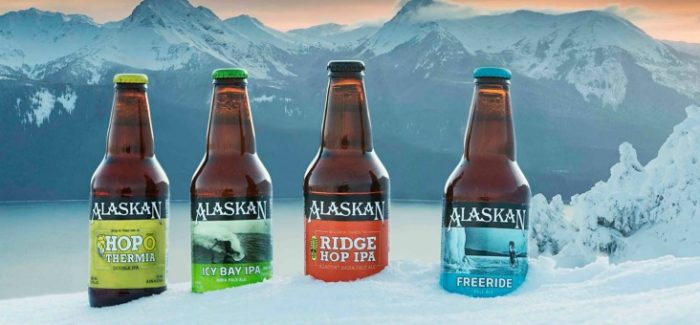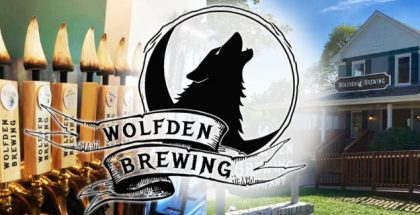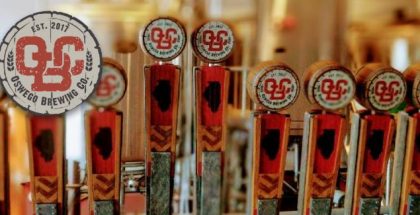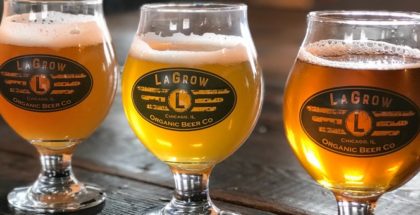Brewery Showcase | Alaskan Brewing
The recipe for each Alaskan Brewing beer is simple: Use authentic, regional ingredients; add creative ingenuity and throw in a dash of brewing history. Since 1986, Alaskan Brewing has enthusiastically embraced its Last Frontier location while simultaneously playing the role of craft beer pioneer.
Beginnings
In 1986, Geoff and Marcy Larson opened Alaska Brewing — the nation’s 67th licensed brewery. Their personal move from the Lower 48 to Alaska was pretty bold to begin with, but opening a brewery in a remote location when, at the time, the craft market accounted for only 0.3% of the entire industry is downright courageous.
Geoff Larson commented, “Well, I think naivety has a lot to do with it. We didn’t know any better. Dumb, stupid, innocent and a bit irresponsible. There’s a reason there are child prodigies — they don’t know any better.“ (laughter)
Certainly, one might think that would put undue strain on a marriage. But, a 1984 visit to the Great American Beer Festival (when only 100 beers were available) included a conversation with a home brew shop owner who also worked with his wife. Geoff explained, “He told us that it would be a catalyst. If we are good together, the business will bring us closer. If we were not, it would create problems. We are still together and our brewery is growing. I guess you could say it worked out well!”
Still, of all the businesses to start, what possessed them in 1986 to make a career out of beer?
“When we moved [to Juneau], we didn’t think others were thinking about beer. But, we found out pretty quickly that there was an audience.” He added, “To be honest, the dearth of brewing diversity drove us to make better beer. We had the import market in Alaska, but the beer arrived pretty old; pretty bad.”
Geoff, a chemical engineer and homebrewer with a love for cooking attended Siebel Institute in Chicago. Marcy was an accountant, but she also took the time to study the history of Alaskan brewing. She discovered records from a turn-of-the-century Alaskan brewery, the Douglas City Brewing Company. She provided that information to Geoff and he subsequently replicated and old recipe at home — Alaska Amber was born. From that, the Larsons and ten volunteers spent a dozen hours packaging 253 cases of Alaska Amber for sale in Juneau, all funded by 88 small investors.
Apparently, they were on to something. Today, the brewery exists as the 19th largest U.S. craft brewery (28th overall).
History in a Glass
That first beer epitomizes what Alaskan Brewing is all about. “The Amber is cold brewed just as the brewers of the past had done it. They only had ale yeast available, which is not easy to manage in a cold environment, but they got it done. So, we cold ferment the Amber, too, which is why it’s called an alt-style as it’s based on old techniques. We express that history and philosophy in our Amber Ale,” explained Geoff.
Meanwhile, Alaskan Brewing emulates a technique from a century ago when brewers had to use direct heat to malt the barley. By relying on local alder wood to build a fire, just as it was done in the past, Alaskan Smoked Porter includes a unique Alaskan, smokey flavor.
Speaking of putting history in a bottle, Captain James Cook’s desire to find the Northwest Passage in 1778, and a desire to brew beer, has provided Alaskan Brewing with a template on which to model its Winter Ale. Cook used local Alaskan plants to eliminate scurvy including the spruce tips, which are often used in the spring for syrups and jellies. Those spruce tips are included in the Winter Ale.
In fact, this video about Alaskan Brewing’s Winter Ale captures the essence of Alaskan Brewing.
Acclimation
Beer fans don’t need to understand the history or complexity involved in each recipe or care that the water comes from a nearby, massive glacier. All that matters is the final product. Nevertheless, because of the difficulty presented to a brewery located in Juneau — a place inaccessible by automobiles, constant reinvention must occur to produce authentic Alaskan beer.
“For us, we had to think about things differently.” In fact, Geoff challenged me during the interview to fold my arms together. So, I did. Then he said, “Now fold them the other way — switch your arms.” Did I do it? Yes. Did I have to think about it first, and figure it out? Yes. He noted, “We are creatures of habit. It doesn’t mean you can’t do things another way, but when you get used to doing something one way, you tend to do it that way all the time. We have adapted. We have found other ways to do things. And, you could argue that it’s sometimes better. Some habits are bad habits.”
For instance, Alaskan Brewing was the first craft brewery to capture and recycle its CO2. Hence, for the last two decades (almost), the brewery no longer has had to purchase CO2. Not only is that economically and logistically beneficial, but it also saves 900,000 lbs of CO2 from being introduced into the atmosphere.
Alaskan Brewing was the first U.S. craft brewer to install a Mash Filter Press, which maximizes the use of malt, hops and water. As a result, the brewery saves more than one million gallons of water per year (at least). “We are the largest user of water in Juneau, so it’s highly important to us that we manage that effectively,” said Geoff.
Something tells me that process will only improve over time.
Furthermore, Alaskan Brewing uses its spent grain as fuel. Its spent grain boiler ostensibly turns beer waste into brewery power. Other breweries have tired it, even spending millions of dollars trying to figure it out, but Alaska Brewing accomplished it. Which, is interesting if you think about it. More beer means more spent grain, which means more fuel. Thus they can make more beer.
I think we are all happy about that!

Constant Reinvention
One should not misconstrue this story as one about a brewery which has solved the puzzle of brewing in Juneau. It’s a constant state of progress and adaption.
“Many old breweries are bound by the shackles of habit and tradition. I was walking through an old German brewery and I’m looking at the walls, just in awe of the plaques that say things like ‘Since 1516.’ But then I’m looking at the equipment and realizing it’s only 30 or 40 years old. At some point, obviously, they adapted. Especially in Europe where you have to conserve and can’t just dump waste into a river like hundreds of years ago. There had to be some adaption to succeed,” explained Geoff.
He added, “But, there were other breweries that I could tell right away the beer was bad — I mean, really flawed. I knew those type of breweries had failed to adapt, to modernize. At some point, everyone must go through some level of reinvention. I don’t care if you are in Germany, Alaska or [in the Lower 48].”
Though Alaskan Brewing resides in the U.S.A.’s Last Frontier, it is they who exist as pioneers through which breweries on both sides of Canada (or in Canada) can emulate. Because of the success of turning spent grain into power, Geoff was asked to speak to the U.S. Senate Natural Resources and Energy Committee. Furthermore, techniques developed at Alaskan Brewing labs regarding yeast usage were taken to the American Society of Brewing, which then standard practice for all breweries. “What we did, the little brewery in Alaska changed the health of every lab person in every brewery. It gives me goosebumps.” (More on this topic in a later, more brewing-technical article.)
Of course, Alaskan Brewing doesn’t only concern itself with logistics; it’s also about adapting to beer styles. The original Alaskan IPA, introduced in 2007, proved to be a local favorite. However, Communications Director Andy Kline commented, “We saw really innovative West Coast IPAs and creative use of hops, really moving forward in hop flavor, aromatics and a lot more dry hopping. So, around 2013, we said, ‘We are a West Coast, Pacific Northwest brewery and we need to have a really great IPA.’ So, we reintroduced our IPA as Icy Bay IPA with the same malt but also amped up hops. We took a beloved beer and changed it.”

Final Thoughts
With all the adaption, reinvention and innovation occurring at Alaskan Brewing, one might wonder, “What’s next?” It’s a given that new beers are coming, and conservation programs will continue to improve. And, one can surmise that other breweries (notably those with financial means) will look to Alaskan Brewing as inspiration on how to be more efficient — or at least that is this writer’s hope.
But, what makes Alaskan Brewing special is not its propensity for acclimation; it’s the brewery’s stubbornness — they set out to brew in Juneau, and they refuse to leave. And, with its continued growth in distribution, it’s evident Alaskan Brewing is making sure more and more people get a taste of what Juneau is all about.
Notes:
Special thanks to Beer Writer & Historian Tom Acitelli, whose superb book, The Audacity of Hops: The History of America’s Craft Beer Revolution (Chicago: Chicago Review Press, 2013), aided me with my research as I prepared for the interview. Subconsciously, I’m sure, I included a few tidbits in this piece that I learned while reading his work.
Also: Special thanks to Lakeshore Beverages in Chicago for providing me the time and space to meet with Geoff Larson and Andy Kline of Alaskan Brewing when they visited Chicago. And, of course, thank you to Geoff and Andy for letting me pick their brains.
Feature Image courtesy of Alaskan Brewing








Submit a Comment